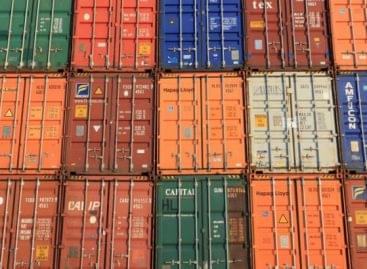Magazine: The growing prestige of Hungarian wine
In 2016 Hungary’s wine export grew much faster, by 6.2 percent than the country’s 1.6-percent agri-food export growth. The bad news is that the majority of our wine export, 45 percent left the country in barrels or tank trucks. Hungary’s bulk wine export increased b 8.6 percent, while our bottled wine export grew by 6.2 percent.However, in terms of value bottled wines were responsible for half of our export sales – bulk wine’s share was 30 percent and sparkling wine was at 8.5 percent.
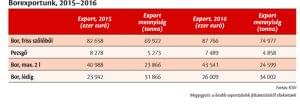

The United Kingdom was our top market, where 19.6 percent of Hungary’s bottled wine export was sold in 2016. On average the export sales price augmented by 3 percent, but for instance in the UK Hungarian wine was sold at 5 percent lower prices, while in the Czech Republic the average sales price soared by 23.5 percent. In the USA we were selling bottled wine for 2.8 times more than our average sales price. Slovakia and the Czech Republic were the biggest export markets for us after the UK, where 46,000-48,000 hectolitres of Hungarian bottled wine was sold. It is really good news that demand is growing for Hungarian wines with a protected designation of origin, e.g. Tokaji realises 34 percent of our bottled wine export sales.
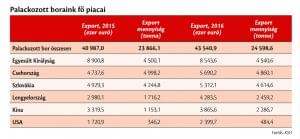
From Hungary’s bottled wine export 54.1 percent of products are of protected origin, in most cases marked with geographical indication. Aszú and Szamorodni wines were popular in Germany, the UK, Slovakia, the Czech Republic, Austria and Russia. Other white wines of protected origin performed well in China, Hong Kong, Taiwan, USA, Switzerland and Japan. Export sales of wines without a protected origin – sold in barrels or tanks – grew by 8.6 percent in value and increased by 3.1 percent in volume. Value sales rose from EUR 24 million to 26 million and volume sales jumped from 32,000 tons to 34,000 tons.
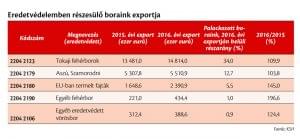
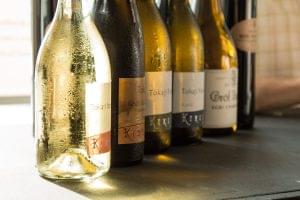
The government introduced Hungary’s Grape and Wine Strategy at the end of last year. It must be pointed out that more than 70 percent of wine grapes in Hungary are produced by growers who don’t make wine, they sell the grapes to purchasers or wineries. This is the reason why grape trade has become a central element in Hungarian winemaking.
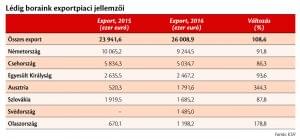
Our wine grape export is increasing year after year. In 2016 56 percent of the wine grapes we exported ended up on Slovakia – sales expanded by 31 percent in this market. It must be noted that less and less land is used for growing grapes: when Hungary became member of the European Union, grapes were grown on 80,000 hectares, but today the growing area is only 63,000 hectares. The Grape and Wine strategy says Hungary needs more producing wineries and investment in technological development. //
Related news
Univer is building on export-led growth
🎧 Hallgasd a cikket: Lejátszás Szünet Folytatás Leállítás Nyelv: Auto…
Read more >Hungarian exports are gaining new momentum: medium-sized companies are increasingly managing exchange rate risk and opening up to new markets
🎧 Hallgasd a cikket: Lejátszás Szünet Folytatás Leállítás Nyelv: Auto…
Read more >KSH: the foreign trade surplus in goods was 713 million euros in October; the volume of exports was 3.1 percent lower, and that of imports was 1.1 percent higher than in the same period of the previous year
🎧 Hallgasd a cikket: Lejátszás Szünet Folytatás Leállítás Nyelv: Auto…
Read more >Related news
CDs and DVDs are experiencing a renaissance at Vatera, but second-hand LEGO is the real star of this Christmas
🎧 Hallgasd a cikket: Lejátszás Szünet Folytatás Leállítás Nyelv: Auto…
Read more >Christmas tree shopping is also going digital: demand for online ordering is growing rapidly
🎧 Hallgasd a cikket: Lejátszás Szünet Folytatás Leállítás Nyelv: Auto…
Read more >NGM and VOSZ cooperation agreement for the security of digital commerce
🎧 Hallgasd a cikket: Lejátszás Szünet Folytatás Leállítás Nyelv: Auto…
Read more >


